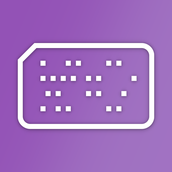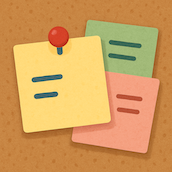이전 글
소개
이전 글 달력 그리기 (1) 포스트에 대한 내용이 먼저 숙지되어야 진행할 수 있습니다.
이전 포스트에서 달력의 데이터를 마련하는 방법에 대해 알아봤는데, 이를 바탕으로 스토리보드 인터페이스 빌더(Interface Builder)를 이용해 GUI 방식으로 달력을 그리는 방법에 대해 알아보겠습니다.
컬렉션 뷰(UICollectionView)를 이용하며, 컬렉션 뷰의 사이즈를 조정하면 해당 사이즈에 맞게 자동으로 달력의 레이아웃도 조절되는 것에 중점을 맞추겠습니다.

컬렉션 뷰의 사이즈에 맞춰 달력을 그립니다.

컬렉션 뷰의 사이즈를 줄이면 달력 레이아웃도 자동으로 맞춰 줄어듭니다.
출처
스토리보드의 뷰 컨트롤러에 요소 추가
뷰 컨트롤러에 아래와 같이 요소들을 추가합니다.

- 제목
2023년 2월과 같이 현재 연월을 표시합니다.
- 컬렉션 뷰
- 헤더:
일 ~ 토와 같이 상단에 요일을 작성합니다.Horizontal Stack View를 추가하고, 안에일 월 화 수 목 금 토각각 7개의 레이블을 추가
- 컬렉션 뷰 셀: 해당 일에 대한 숫자가 표시됩니다.
- 헤더:
- 버튼
Prev: 현재 표시되는 달의 이전 달(한달 전)으로 이동Next: 현재 표시되는 달의 다음 달(한달 후)으로 이동- 예)
2023년 2월에서Prev를 누르면2023년 1월,Next를 누르면2023년 3월로 이동
참고
- iOS 프로그래밍: 컬렉션 뷰 (Swift, 스토리보드) – 컬렉션 뷰 추가, 커스텀 셀 작성
- Swift(스위프트): 버튼(UIButton)에서 이미지 오른쪽으로 옮기기 / 이미지와 레이블 간 간격 띄우기 (스토리보드)
스토리보드와 뷰 컨트롤러 코드 간 연결


- @IBOutlet
calendarCollectionView: 달력의 컬렉션 뷰lblCalendarTitle: 달력 제목 레이블
- @IBAction
btnActPrevMonth: 이전 달로 이동btnActNextMonth: 다음 달로 이동
참고
컬렉션 뷰 셀에 식별자(Identifier)와 클래스 지정하기
날짜 표시 칸으로 사용되는 컬렉션 뷰 셀은 고유의 형식을 지녀야 하기 때문에 커스터마이징 할 필요가 있습니다.
컬렉션 뷰의 셀(하나만 있음)을 클릭하고 오른쪽 설정 패널에서
Identity Inspector에서Custom Class를DayCell로 지정

Attribute Inspector에서Identifier를DayCell로 지정

합니다.
프로젝트에 달력 데이터 생성 클래스 (CalendarData) 추가
이전 포스트의 내용을 바탕으로 데이터 생성 과정을 클래스화시킨 아래 코드를 프로젝트에 추가합니다.
import Foundation
struct Day {
/// Date 인스턴스.
let date: Date
/// 화면에 표시될 숫자.
/// 예) Date 인스턴스가 2022년 1월 25일이라면 -> 25
let number: String
/// 이 날짜가 선택되었는지 여부.
let isSelected: Bool
/// 이 날짜가 현재 달 내에 있는지 추적.
/// 예) 1월 달력을 그리고자 할 떄 Date 인스턴스가 1월 25일이라면 true, 2월 1일이라면 false
let isWithinDisplayedMonth: Bool
}
struct MonthMetadata {
/// 해당 달의 총 일수, 예를 들어 1월은 31일까지 있으므로 31
let numberOfDays: Int
/// 해당 달의 첫 Date
let firstDay: Date
/// 해당 달의 첫 Date가 무슨 요일인지 반환, 일 ~ 토 => 1 ~ 7
/// 예) 수요일이라면 4
let firstDayWeekday: Int
}
import UIKit
enum CalendarDataError: Error {
case metadataGeneration
}
class CalendarData {
typealias DateHandler = (Date) -> Void
private let calendar = Calendar(identifier: .gregorian)
let changedBaseDateHandler: DateHandler
private var baseDate: Date {
didSet {
days = generateDaysInMonth(for: baseDate)
// collectionView.reloadData()
//
// headerView.baseDate = baseDate
changedBaseDateHandler(baseDate)
}
}
var selectedDate: Date {
didSet {
days = generateDaysInMonth(for: self.baseDate)
}
}
private(set) var days: [Day] = []
/// baseDate가 속한 달에서 주(week)의 수는 몇개인지 반환
var numberOfWeeksInBaseDate: Int {
calendar.range(of: .weekOfMonth, in: .month, for: baseDate)?.count ?? 0
}
private lazy var dateFormatterOnlyD: DateFormatter = {
let dateFormatter = DateFormatter()
dateFormatter.dateFormat = "d"
return dateFormatter
}()
private lazy var dateFormatterCalendarTitle: DateFormatter = {
let dateFormatter = DateFormatter()
dateFormatter.calendar = Calendar(identifier: .gregorian)
dateFormatter.locale = Locale.autoupdatingCurrent
dateFormatter.setLocalizedDateFormatFromTemplate("MMMM y")
return dateFormatter
}()
var localizedCalendarTitle: String {
return dateFormatterCalendarTitle.string(from: baseDate)
}
init(baseDate: Date, changedBaseDateHandler: @escaping DateHandler) {
self.baseDate = baseDate
self.changedBaseDateHandler = changedBaseDateHandler
self.selectedDate = baseDate
days = generateDaysInMonth(for: self.baseDate)
}
// MARK: - Methods
func moveMonth(value: Int) {
baseDate = calendar.date(byAdding: .month, value: value, to: baseDate) ?? baseDate
}
// MARK: - Generating a Month’s Metadata
/// Date를 기준으로 월별 메타데이터인 MonthMetaData 인스턴스를 생성.
private func monthMetadata(for baseDate: Date) throws -> MonthMetadata {
// You ask the calendar for the number of days in baseDate‘s month, then you get the first day of that month.
guard
let numberOfDaysInMonth = calendar.range(of: .day, in: .month, for: baseDate)?.count,
let firstDayOfMonth = calendar.date(from: calendar.dateComponents([.year, .month], from: baseDate))
else {
// Both of the previous calls return optional values. If either returns nil, the code throws an error and returns.
throw CalendarDataError.metadataGeneration
}
// You get the weekday value, a number between one and seven that represents which day of the week the first day of the month falls on.
// weekday: 주일, 평일: 일요일 이외의 6일간을 가리키는 경우와 토·일요일 이외의 5일간을 가리키는 경우가 있음.
let firstDayWeekday: Int = calendar.component(.weekday, from: firstDayOfMonth)
// Finally, you use these values to create an instance of MonthMetadata and return it.
return MonthMetadata(
numberOfDays: numberOfDaysInMonth,
firstDay: firstDayOfMonth,
firstDayWeekday: firstDayWeekday)
}
/// Adds or subtracts an offset from a Date to produce a new one, and return its result.
private func generateDay(offsetBy dayOffset: Int, for baseDate: Date, isWithinDisplayedMonth: Bool) -> Day {
let date = calendar.date(byAdding: .day, value: dayOffset, to: baseDate) ?? baseDate
return Day(
date: date,
number: dateFormatterOnlyD.string(from: date),
isSelected: calendar.isDate(date, inSameDayAs: selectedDate),
isWithinDisplayedMonth: isWithinDisplayedMonth)
}
/// Takes the first day of the displayed month and returns an array of Day objects.
private func generateStartOfNextMonth(using firstDayOfDisplayedMonth: Date) -> [Day] {
// Retrieve the last day of the displayed month. If this fails, you return an empty array.
guard let lastDayInMonth = calendar.date(
byAdding: DateComponents(month: 1, day: -1),
to: firstDayOfDisplayedMonth) else {
return []
}
// Calculate the number of extra days you need to fill the last row of the calendar.
// For instance, if the last day of the month is a Saturday, the result is zero and you return an empty array.
let additionalDays = 7 - calendar.component(.weekday, from: lastDayInMonth)
guard additionalDays > 0 else {
return []
}
/*
Create a Range<Int> from one to the value of additionalDays, as in the previous section.
Then, it transforms this into an array of Days.
This time, generateDay(offsetBy:for:isWithinDisplayedMonth:) adds the current day in the loop to lastDayInMonth
to generate the days at the beginning of the next month.
*/
let days: [Day] = (1...additionalDays)
.map {
generateDay(offsetBy: $0, for: lastDayInMonth, isWithinDisplayedMonth: false)
}
return days
}
/// Takes in a Date and returns an array of Days.
private func generateDaysInMonth(for baseDate: Date) -> [Day] {
// Retrieve the metadata you need about the month, using monthMetadata(for:).
// If something goes wrong here, the app can’t function. As a result, it terminates with a fatalError.
guard let metadata = try? monthMetadata(for: baseDate) else {
fatalError("An error occurred when generating the metadata for \(baseDate)")
}
let numberOfDaysInMonth = metadata.numberOfDays
let offsetInInitialRow = metadata.firstDayWeekday
let firstDayOfMonth = metadata.firstDay
/*
If a month starts on a day other than Sunday, you add the last few days from the previous month at the beginning.
This avoids gaps in a month’s first row. Here, you create a Range<Int> that handles this scenario.
For example, if a month starts on Friday, offsetInInitialRow would add five extra days to even up the row.
You then transform this range into [Day], using map(_:).
*/
var days: [Day] = (1..<(numberOfDaysInMonth + offsetInInitialRow))
.map { day in
// Check if the current day in the loop is within the current month or part of the previous month.
let isWithinDisplayedMonth = day >= offsetInInitialRow
// Calculate the offset that day is from the first day of the month. If day is in the previous month, this value will be negative.
let dayOffset = isWithinDisplayedMonth ? day - offsetInInitialRow : -(offsetInInitialRow - day)
// Call generateDay(offsetBy:for:isWithinDisplayedMonth:), which adds or subtracts an offset from a Date to produce a new one, and return its result.
return generateDay(offsetBy: dayOffset, for: firstDayOfMonth, isWithinDisplayedMonth: isWithinDisplayedMonth)
}
days += generateStartOfNextMonth(using: firstDayOfMonth)
return days
}
}
- 달력 데이터 클래스에 대한 구현 방법 및 자세한 원리는 이전 포스트에 설명되어 있습니다.
CalendarData의 인스턴스 변수를 뷰 컨트롤러에 추가
뷰 컨트롤러의 멤버 변수로 아래를 추가합니다.
private var calendarData: CalendarData!
나중에 viewDidLoad(_:)에서 초기화됩니다.
DayCell 클래스 작성
달력의 셀에 대한 커스텀 클래스가 필요합니다. 프로젝트에 다음 코드를 추가하고, @IBOutlet 연결을 수행합니다. (연결되지 않으면 프로젝트 창을 껐다 켜면 됩니다.)

class DayCell: UICollectionViewCell {
@IBOutlet weak var lblNumber: UILabel!
func configure(day: Day) {
lblNumber.textColor = day.isWithinDisplayedMonth ? .label : .systemGray3
lblNumber.text = "\(day.number)"
self.backgroundColor = day.isSelected ? .systemPink : .systemYellow
}
}
lblNumber: 숫자가 표시될 레이블configure함수는 셀의 내용을 채우는 부분으로,Day타입의 인스턴스를 받습니다.- lblNumber.textColor = …
- 현재 달에 속하였다면 레이블의 기본 색(
.label; 라이트 모드에서 검은색)으로 표시하고, 아니라면 회색(.systemGray3)으로 표시합니다.
- 현재 달에 속하였다면 레이블의 기본 색(
- self.backgroundColor = …
- 일자 선택 기능(Select Date)에서 특정 일을 선택한 경우, 해당 셀의 배경은
.systemPink이고, 아니라면기본 색입니다. (여기서는 학습 목적을 위해.systemYellow색을 지정했습니다.)
- 일자 선택 기능(Select Date)에서 특정 일을 선택한 경우, 해당 셀의 배경은
- lblNumber.textColor = …
뷰 컨트롤러의 viewDidLoad(_:) 내부에 내용 추가
override func viewDidLoad() {
super.viewDidLoad()
// 1
calendarCollectionView.delegate = self
calendarCollectionView.dataSource = self
// 2
calendarData = CalendarData(baseDate: Date(), changedBaseDateHandler: { date in
// ... baseDate가 변경되면 해야 할 작업을 작성, 컬렉션 뷰 리로드 등 ... //
})
// 3
lblCalendarTitle.text = calendarData.localizedCalendarTitle
}
- 컬렉션 뷰와 뷰 컨트롤러 간
delegate,dataSource연결을 수행합니다. calendarData를 초기화합니다.- 달력 타이틀을 지정합니다.
CalendarData의 changeBaseDateHandler는 CalendarData 인스턴스에서 baseDate(기준 일자)가 변경되었을 경우 해야 할 작업을 지정합니다. Prev, Next 버튼을 누르면 기준 일자가 변경됩니다.
아래의 해야 할 작업 목록을 코드로 작성합니다.
- 컬렉션 뷰를 변경된 데이터 기준으로 다시 로드 (
reloadData()) - 달력의 제목을 변경
calendarData = CalendarData(baseDate: Date(), changedBaseDateHandler: { date in
self.calendarCollectionView.reloadData()
self.lblCalendarTitle.text = self.calendarData.localizedCalendarTitle
})
기준 일자 변경 부분 구현 – Prev, Next 버튼
Prev, Next 버튼을 누르면 달력의 표시 월(month)가 바뀌어야 합니다. calendarData.baseDate를 변경해서 기준 일자를 변경합니다. 기준 일자가 변경되면 위 섹션에서 지정한 핸들러 changedBaseDateHandler가 실행되면서 달력을 다시 그립니다.
@IBAction func btnActPrevMonth(_ sender: Any) {
calendarData.moveMonth(value: -1)
}
@IBAction func btnActNextMonth(_ sender: Any) {
calendarData.moveMonth(value: 1)
}
참고로 CalendarData의 moveMonth는 아래와 같이 되어 있습니다.
func moveMonth(value: Int) {
baseDate = calendar.date(byAdding: .month, value: value, to: baseDate) ?? baseDate
}
셀이 달력의 한 줄(Line)을 7칸씩 채우도록 Flow Layout 조절
UICollectionViewDelegateFlowLayout의 collectionView(...sizeForItemAt...)을 이용하면 한 셀의 너비(width)와 높이(height)를 지정할 수 있습니다. UICollectionViewDelegateFlowLayout을 준수하는 아래 extension을 추가합니다.
extension CalendarViewController: UICollectionViewDelegateFlowLayout {
func collectionView(_ collectionView: UICollectionView, layout collectionViewLayout: UICollectionViewLayout, sizeForItemAt indexPath: IndexPath) -> CGSize {
let width = Int(calendarCollectionView.frame.width / 7)
let height = Int(calendarCollectionView.frame.height - 50) / calendarData.numberOfWeeksInBaseDate
return CGSize(width: width, height: height)
}
}
- 먼저 인터페이스 빌더의 컬렉션 뷰의 설정에서
Estimate Size는None으로 지정해야 합니다. - width
- 현재 컬렉션 뷰의 프레임 너비를
7칸으로 나눠서 셀이 한 줄마다 7칸씩 차도록 합니다.
- 현재 컬렉션 뷰의 프레임 너비를
- height
numberOfWeeksInBaseDate는 현재 표시되는 달이 몇 개의 주(week)를 가지고 있는지를 나타냅니다.- 보통
5개이나,6이 반환되는 경우도 있습니다. - 프레임의 전체 높이에서
50을 뺀 높이를 주 수로 나누면 한 셀의 높이가 나옵니다. - 프레임의 전체 높이에서
50을 뺀 이유: 50은 헤더의 높이인데 헤더의 높이 사이즈를 빼야 실제 표시 부분의 높이가 나오기 때문입니다.- 위의 코드는 하드코딩으로
50을 지정했습니다. - 실제 적용시에는 하드코딩을 피하는 방식으로 헤더의 사이즈를 뺴는 것을 권장합니다.
- 위의 코드는 하드코딩으로
return CGSize(width:height:)형태로 너비와 높이를 지정합니다.
컬렉션 뷰의 DataSource, Delegate 구현
실제 달력의 내용을 채우는 과정은 DataSource 프로토콜에서 지정된 메서드를 이용해야 합니다.
UICollectionViewDelegate, UICollectionViewDataSource를 준수하는 extension을 추가한 뒤, 다음과 같이 코드를 작성합니다.
extension CalendarViewController: UICollectionViewDelegate, UICollectionViewDataSource {
// 1
func collectionView(_ collectionView: UICollectionView, numberOfItemsInSection section: Int) -> Int {
calendarData.days.count
}
// 2
func collectionView(_ collectionView: UICollectionView, cellForItemAt indexPath: IndexPath) -> UICollectionViewCell {
guard let cell = collectionView.dequeueReusableCell(withReuseIdentifier: "DayCell", for: indexPath) as? DayCell else {
fatalError("Cell is not initialized.")
}
cell.configure(day: calendarData.days[indexPath.row])
return cell
}
// 3
func collectionView(_ collectionView: UICollectionView, viewForSupplementaryElementOfKind kind: String, at indexPath: IndexPath) -> UICollectionReusableView {
switch kind {
case UICollectionView.elementKindSectionHeader:
return collectionView.dequeueReusableSupplementaryView(ofKind: kind, withReuseIdentifier: "CalendarHeaderView", for: indexPath)
default:
fatalError("Not allowed.")
}
}
// 4
func collectionView(_ collectionView: UICollectionView, didSelectItemAt indexPath: IndexPath) {
let day = calendarData.days[indexPath.row]
calendarData.selectedDate = day.date
collectionView.reloadData()
}
}
- …numberOfItemsInSection…
- 셀의 총 개수를 지정합니다.
calendarData의days배열은 표시해야 할Day인스턴스를 담고 있으며, 이 배열의 총 원소 개수가 표시해야 할 셀의 개수가 됩니다.
- …cellForItemAt…
- 각 셀의 인스턴스 및 표시될 내용을 지정하는 부분입니다.
- …viewForSupplementaryElementOfKind…
- 셀의 헤더 뷰를 표시하려면 이 부분을 반드시 추가해야 합니다.
- 헤더 뷰의
Identifier를CalendarHeaderView로 지정합니다.
kind가 헤더 뷰(.elementKindSectionHeader)인 경우,
collectionView. dequeueReusableSupplementaryView를 통해 헤더 뷰 인스턴스를 반환합니다.- 참고: iOS ) UICollectionReusableView
- …didSelectItemAt…
- 셀을 선택한 경우 해당 셀에 해당하는 날짜를 하이라이트 표시합니다.
동작 확인
빌드 및 실행하고, 아래와 같이 동작하는지 확인합니다.
- 달력이 칸수에 맞게 제대로 그려집니다.
Prev,Next버튼을 클릭하면 이전 달 또는 다음 달로 이동합니다.- 날짜를 클릭하면 해당 날짜가 하이라이트됩니다.
- 다른 달로 이동했다 돌아와도 해당 날짜에 하이라이트가 유지됩니다.
전체 코드
This file contains hidden or bidirectional Unicode text that may be interpreted or compiled differently than what appears below. To review, open the file in an editor that reveals hidden Unicode characters.
Learn more about bidirectional Unicode characters
| // | |
| // CalendarData.swift | |
| // | |
| // Created by yoonbumtae on 2023/02/04. | |
| // | |
| import UIKit | |
| enum CalendarDataError: Error { | |
| case metadataGeneration | |
| } | |
| class CalendarData { | |
| typealias DateHandler = (Date) -> Void | |
| private let calendar = Calendar(identifier: .gregorian) | |
| let changedBaseDateHandler: DateHandler | |
| private var baseDate: Date { | |
| didSet { | |
| days = generateDaysInMonth(for: baseDate) | |
| changedBaseDateHandler(baseDate) | |
| } | |
| } | |
| var selectedDate: Date { | |
| didSet { | |
| days = generateDaysInMonth(for: self.baseDate) | |
| } | |
| } | |
| private(set) var days: [Day] = [] | |
| /// baseDate가 속한 달에서 주(week)의 수는 몇개인지 반환 | |
| var numberOfWeeksInBaseDate: Int { | |
| calendar.range(of: .weekOfMonth, in: .month, for: baseDate)?.count ?? 0 | |
| } | |
| private lazy var dateFormatterOnlyD: DateFormatter = { | |
| let dateFormatter = DateFormatter() | |
| dateFormatter.dateFormat = "d" | |
| return dateFormatter | |
| }() | |
| private lazy var dateFormatterCalendarTitle: DateFormatter = { | |
| let dateFormatter = DateFormatter() | |
| dateFormatter.calendar = Calendar(identifier: .gregorian) | |
| dateFormatter.locale = Locale.autoupdatingCurrent | |
| dateFormatter.setLocalizedDateFormatFromTemplate("MMMM y") | |
| return dateFormatter | |
| }() | |
| var localizedCalendarTitle: String { | |
| return dateFormatterCalendarTitle.string(from: baseDate) | |
| } | |
| init(baseDate: Date, changedBaseDateHandler: @escaping DateHandler) { | |
| self.baseDate = baseDate | |
| self.changedBaseDateHandler = changedBaseDateHandler | |
| self.selectedDate = baseDate | |
| days = generateDaysInMonth(for: self.baseDate) | |
| } | |
| // MARK: – Methods | |
| func moveMonth(value: Int) { | |
| baseDate = calendar.date(byAdding: .month, value: value, to: baseDate) ?? baseDate | |
| } | |
| // MARK: – Generating a Month’s Metadata | |
| /// Date를 기준으로 월별 메타데이터인 MonthMetaData 인스턴스를 생성. | |
| private func monthMetadata(for baseDate: Date) throws -> MonthMetadata { | |
| // You ask the calendar for the number of days in baseDate‘s month, then you get the first day of that month. | |
| guard | |
| let numberOfDaysInMonth = calendar.range(of: .day, in: .month, for: baseDate)?.count, | |
| let firstDayOfMonth = calendar.date(from: calendar.dateComponents([.year, .month], from: baseDate)) | |
| else { | |
| // Both of the previous calls return optional values. If either returns nil, the code throws an error and returns. | |
| throw CalendarDataError.metadataGeneration | |
| } | |
| // You get the weekday value, a number between one and seven that represents which day of the week the first day of the month falls on. | |
| // weekday: 주일, 평일: 일요일 이외의 6일간을 가리키는 경우와 토·일요일 이외의 5일간을 가리키는 경우가 있음. | |
| let firstDayWeekday: Int = calendar.component(.weekday, from: firstDayOfMonth) | |
| // Finally, you use these values to create an instance of MonthMetadata and return it. | |
| return MonthMetadata( | |
| numberOfDays: numberOfDaysInMonth, | |
| firstDay: firstDayOfMonth, | |
| firstDayWeekday: firstDayWeekday) | |
| } | |
| /// Adds or subtracts an offset from a Date to produce a new one, and return its result. | |
| private func generateDay(offsetBy dayOffset: Int, for baseDate: Date, isWithinDisplayedMonth: Bool) -> Day { | |
| let date = calendar.date(byAdding: .day, value: dayOffset, to: baseDate) ?? baseDate | |
| return Day( | |
| date: date, | |
| number: dateFormatterOnlyD.string(from: date), | |
| isSelected: calendar.isDate(date, inSameDayAs: selectedDate), | |
| isWithinDisplayedMonth: isWithinDisplayedMonth) | |
| } | |
| /// Takes the first day of the displayed month and returns an array of Day objects. | |
| private func generateStartOfNextMonth(using firstDayOfDisplayedMonth: Date) -> [Day] { | |
| // Retrieve the last day of the displayed month. If this fails, you return an empty array. | |
| guard let lastDayInMonth = calendar.date( | |
| byAdding: DateComponents(month: 1, day: -1), | |
| to: firstDayOfDisplayedMonth) else { | |
| return [] | |
| } | |
| // Calculate the number of extra days you need to fill the last row of the calendar. | |
| // For instance, if the last day of the month is a Saturday, the result is zero and you return an empty array. | |
| let additionalDays = 7 – calendar.component(.weekday, from: lastDayInMonth) | |
| guard additionalDays > 0 else { | |
| return [] | |
| } | |
| /* | |
| Create a Range<Int> from one to the value of additionalDays, as in the previous section. | |
| Then, it transforms this into an array of Days. | |
| This time, generateDay(offsetBy:for:isWithinDisplayedMonth:) adds the current day in the loop to lastDayInMonth | |
| to generate the days at the beginning of the next month. | |
| */ | |
| let days: [Day] = (1…additionalDays) | |
| .map { | |
| generateDay(offsetBy: $0, for: lastDayInMonth, isWithinDisplayedMonth: false) | |
| } | |
| return days | |
| } | |
| /// Takes in a Date and returns an array of Days. | |
| private func generateDaysInMonth(for baseDate: Date) -> [Day] { | |
| // Retrieve the metadata you need about the month, using monthMetadata(for:). | |
| // If something goes wrong here, the app can’t function. As a result, it terminates with a fatalError. | |
| guard let metadata = try? monthMetadata(for: baseDate) else { | |
| fatalError("An error occurred when generating the metadata for \(baseDate)") | |
| } | |
| let numberOfDaysInMonth = metadata.numberOfDays | |
| let offsetInInitialRow = metadata.firstDayWeekday | |
| let firstDayOfMonth = metadata.firstDay | |
| /* | |
| If a month starts on a day other than Sunday, you add the last few days from the previous month at the beginning. | |
| This avoids gaps in a month’s first row. Here, you create a Range<Int> that handles this scenario. | |
| For example, if a month starts on Friday, offsetInInitialRow would add five extra days to even up the row. | |
| You then transform this range into [Day], using map(_:). | |
| */ | |
| var days: [Day] = (1..<(numberOfDaysInMonth + offsetInInitialRow)) | |
| .map { day in | |
| // Check if the current day in the loop is within the current month or part of the previous month. | |
| let isWithinDisplayedMonth = day >= offsetInInitialRow | |
| // Calculate the offset that day is from the first day of the month. If day is in the previous month, this value will be negative. | |
| let dayOffset = isWithinDisplayedMonth ? day – offsetInInitialRow : -(offsetInInitialRow – day) | |
| // Call generateDay(offsetBy:for:isWithinDisplayedMonth:), which adds or subtracts an offset from a Date to produce a new one, and return its result. | |
| return generateDay(offsetBy: dayOffset, for: firstDayOfMonth, isWithinDisplayedMonth: isWithinDisplayedMonth) | |
| } | |
| days += generateStartOfNextMonth(using: firstDayOfMonth) | |
| return days | |
| } | |
| } |
This file contains hidden or bidirectional Unicode text that may be interpreted or compiled differently than what appears below. To review, open the file in an editor that reveals hidden Unicode characters.
Learn more about bidirectional Unicode characters
| // | |
| // CalendarViewController.swift | |
| // | |
| // Created by yoonbumtae on 2023/02/04. | |
| // | |
| import UIKit | |
| class CalendarViewController: UIViewController { | |
| @IBOutlet weak var calendarCollectionView: UICollectionView! | |
| @IBOutlet weak var lblCalendarTitle: UILabel! | |
| private var calendarData: CalendarData! | |
| override func viewDidLoad() { | |
| super.viewDidLoad() | |
| calendarCollectionView.delegate = self | |
| calendarCollectionView.dataSource = self | |
| calendarData = CalendarData(baseDate: Date(), changedBaseDateHandler: { date in | |
| self.calendarCollectionView.reloadData() | |
| self.lblCalendarTitle.text = self.calendarData.localizedCalendarTitle | |
| }) | |
| lblCalendarTitle.text = calendarData.localizedCalendarTitle | |
| } | |
| override func viewWillAppear(_ animated: Bool) { | |
| super.viewWillAppear(animated) | |
| self.title = "Progress Calendar" | |
| self.navigationController?.isNavigationBarHidden = false | |
| // self.navigationController?.navigationBar.prefersLargeTitles = true | |
| } | |
| override func viewWillDisappear(_ animated: Bool) { | |
| super.viewWillDisappear(animated) | |
| self.navigationController?.isNavigationBarHidden = true | |
| } | |
| @IBAction func btnActPrevMonth(_ sender: Any) { | |
| calendarData.moveMonth(value: -1) | |
| } | |
| @IBAction func btnActNextMonth(_ sender: Any) { | |
| calendarData.moveMonth(value: 1) | |
| } | |
| } | |
| extension CalendarViewController: UICollectionViewDelegate, UICollectionViewDataSource { | |
| func collectionView(_ collectionView: UICollectionView, numberOfItemsInSection section: Int) -> Int { | |
| calendarData.days.count | |
| } | |
| func collectionView(_ collectionView: UICollectionView, cellForItemAt indexPath: IndexPath) -> UICollectionViewCell { | |
| guard let cell = collectionView.dequeueReusableCell(withReuseIdentifier: "DayCell", for: indexPath) as? DayCell else { | |
| fatalError("Cell is not initialized.") | |
| } | |
| cell.configure(day: calendarData.days[indexPath.row]) | |
| return cell | |
| } | |
| func collectionView(_ collectionView: UICollectionView, viewForSupplementaryElementOfKind kind: String, at indexPath: IndexPath) -> UICollectionReusableView { | |
| switch kind { | |
| case UICollectionView.elementKindSectionHeader: | |
| return collectionView.dequeueReusableSupplementaryView(ofKind: kind, withReuseIdentifier: "CalendarHeaderView", for: indexPath) | |
| default: | |
| fatalError("Not allowed.") | |
| } | |
| } | |
| func collectionView(_ collectionView: UICollectionView, didSelectItemAt indexPath: IndexPath) { | |
| let day = calendarData.days[indexPath.row] | |
| calendarData.selectedDate = day.date | |
| collectionView.reloadData() | |
| } | |
| } | |
| extension CalendarViewController: UICollectionViewDelegateFlowLayout { | |
| func collectionView(_ collectionView: UICollectionView, layout collectionViewLayout: UICollectionViewLayout, sizeForItemAt indexPath: IndexPath) -> CGSize { | |
| let width = Int(calendarCollectionView.frame.width / 7) | |
| let height = Int(calendarCollectionView.frame.height – 50) / calendarData.numberOfWeeksInBaseDate | |
| return CGSize(width: width, height: height) | |
| } | |
| } | |
| class DayCell: UICollectionViewCell { | |
| @IBOutlet weak var lblNumber: UILabel! | |
| func configure(day: Day) { | |
| lblNumber.textColor = day.isWithinDisplayedMonth ? .label : .systemGray3 | |
| lblNumber.text = "\(day.number)" | |
| self.backgroundColor = day.isSelected ? .systemPink : .systemYellow | |
| } | |
| } |
This file contains hidden or bidirectional Unicode text that may be interpreted or compiled differently than what appears below. To review, open the file in an editor that reveals hidden Unicode characters.
Learn more about bidirectional Unicode characters
| import Foundation | |
| struct Day { | |
| /// Date 인스턴스. | |
| let date: Date | |
| /// 화면에 표시될 숫자. | |
| /// 예) Date 인스턴스가 2022년 1월 25일이라면 -> 25 | |
| let number: String | |
| /// 이 날짜가 선택되었는지 여부. | |
| let isSelected: Bool | |
| /// 이 날짜가 현재 달 내에 있는지 추적. | |
| /// 예) 1월 달력을 그리고자 할 떄 Date 인스턴스가 1월 25일이라면 true, 2월 1일이라면 false | |
| let isWithinDisplayedMonth: Bool | |
| } |
This file contains hidden or bidirectional Unicode text that may be interpreted or compiled differently than what appears below. To review, open the file in an editor that reveals hidden Unicode characters.
Learn more about bidirectional Unicode characters
| import Foundation | |
| struct MonthMetadata { | |
| /// 해당 달의 총 일수, 예를 들어 1월은 31일까지 있으므로 31 | |
| let numberOfDays: Int | |
| /// 해당 달의 첫 Date | |
| let firstDay: Date | |
| /// 해당 달의 첫 Date가 무슨 요일인지 반환, 일 ~ 토 => 1 ~ 7 | |
| /// 예) 수요일이라면 4 | |
| let firstDayWeekday: Int | |
| } |






0개의 댓글